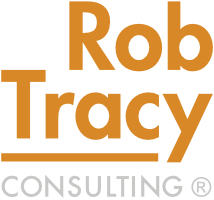One reason that automation has yet to be widely embraced by many small and medium-sized enterprises (SME) is project failure or the perceived risk of automating. If an investment fails to produce results, who can blame owners and executives for shying away from another bite of the apple!
Three Risk Categories
My review of dozens of automation projects across industries and processes has revealed three types of risk: Strategic, Technical, and Project Management. Let’s examine each category.
- Strategic – the risk of taking the wrong automation path that impacts the business’s ability to compete. This also includes the decision about how projects will be scoped and managed.
- Technical – significant automation faults, reduced output, or complete failure due to lack of understanding of the variability of the process to be automated. This is the number one reason for project failure or delays and cost overruns.
- Project Management – there are multiple failure modes in this category ranging from too wide of automation scope (too many parts or assemblies) to selection of the wrong automation provider. Most of these issues arise due to lack of technical experience in managing automation projects and lack of a detailed project plan.
Risk Mitigation
Strategic Risk Mitigation includes four critical actions that set the foundation for the entire strategy:
- Complete a formal SWOT analysis and identify how automation impacts the business. What areas of impact are most important? How much improvement is needed for each affected metric?
- Utilize a competent technical person to lead the effort to identify, evaluate, and select projects to support the strategy. Someone who can lead product/process analysis, understands automation alternatives, and can work at both a tactical and strategic level.
- Require a formal project management process and structure for each project that includes tactical risk mitigation.
Many projects are launched and investments made without understanding the underlying risks of highly variable processes. Technical risk mitigation starts during the evaluation and selection of automation projects.
- Clearly determine the scope of each project – the process(s) to automate, the part families to include and those not to include. Remember, too much complexity results in very high automation cost, delays, and high risk of failure.
- Assess technical process risks for each prospective project for areas such as: complexity, equipment condition and performance, material variability, and process capability. Using statistical techniques to assess process capability, inspection of parts from key part vendors, and review of machine downtime and physical condition should be a minimum.
- Explore alternative solutions for each opportunity by identifying and contacting a few appropriate automation integrators. Integrators have specific areas of specialization that should guide this search, identify risk areas, and provide project estimates.
Project management risks are minimized if the Strategic and Technical risks are mitigated. Automation projects of any size and complexity should include the following elements:
- A clear, complete project plan and mission (A3 format is great)
- A cross-functional project team including support personnel
- Clear project scope (frozen) that is the basis for the contract and project
- Evaluation of alternative suppliers
- Inclusion of often overlooked items such as material handling, utilities, maintenance access
- Three-stage acceptance of the project: design review and sign off, acceptance at the automation supplier, and sign off after defined runoff in your factory at rates
About the Author – Paul Neblock is Partner at APEX Management Partners, LLC with 30+ years of experience implementing automation strategies Paul@apexmanagementpartners.net 847-558-9008
